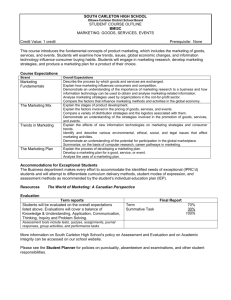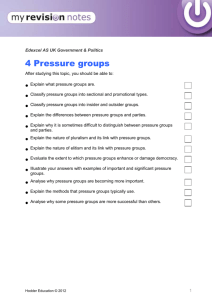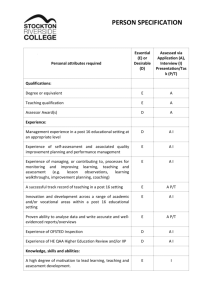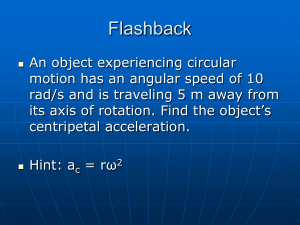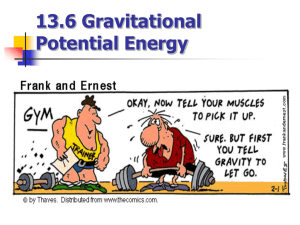Motion in one and two dimensions Key knowledge
advertisement
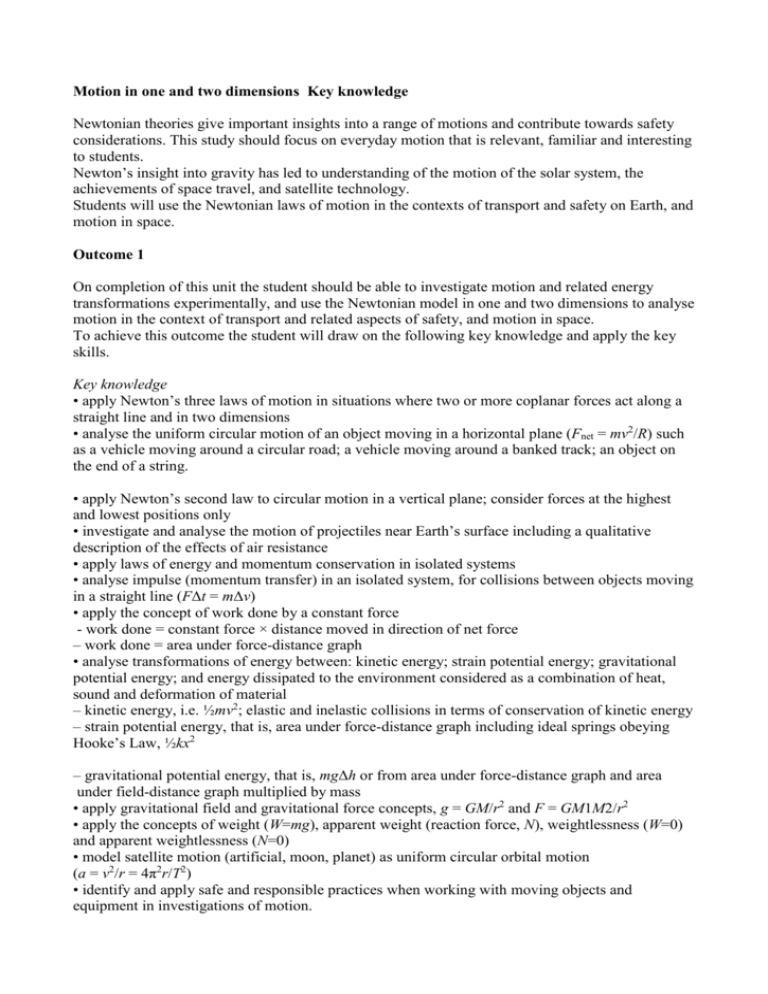
Motion in one and two dimensions Key knowledge Newtonian theories give important insights into a range of motions and contribute towards safety considerations. This study should focus on everyday motion that is relevant, familiar and interesting to students. Newton’s insight into gravity has led to understanding of the motion of the solar system, the achievements of space travel, and satellite technology. Students will use the Newtonian laws of motion in the contexts of transport and safety on Earth, and motion in space. Outcome 1 On completion of this unit the student should be able to investigate motion and related energy transformations experimentally, and use the Newtonian model in one and two dimensions to analyse motion in the context of transport and related aspects of safety, and motion in space. To achieve this outcome the student will draw on the following key knowledge and apply the key skills. Key knowledge • apply Newton’s three laws of motion in situations where two or more coplanar forces act along a straight line and in two dimensions • analyse the uniform circular motion of an object moving in a horizontal plane (Fnet = mv2/R) such as a vehicle moving around a circular road; a vehicle moving around a banked track; an object on the end of a string. • apply Newton’s second law to circular motion in a vertical plane; consider forces at the highest and lowest positions only • investigate and analyse the motion of projectiles near Earth’s surface including a qualitative description of the effects of air resistance • apply laws of energy and momentum conservation in isolated systems • analyse impulse (momentum transfer) in an isolated system, for collisions between objects moving in a straight line (FΔt = mΔv) • apply the concept of work done by a constant force - work done = constant force × distance moved in direction of net force – work done = area under force-distance graph • analyse transformations of energy between: kinetic energy; strain potential energy; gravitational potential energy; and energy dissipated to the environment considered as a combination of heat, sound and deformation of material – kinetic energy, i.e. ½mv2; elastic and inelastic collisions in terms of conservation of kinetic energy – strain potential energy, that is, area under force-distance graph including ideal springs obeying Hooke’s Law, ½kx2 – gravitational potential energy, that is, mgΔh or from area under force-distance graph and area under field-distance graph multiplied by mass • apply gravitational field and gravitational force concepts, g = GM/r2 and F = GM1M2/r2 • apply the concepts of weight (W=mg), apparent weight (reaction force, N), weightlessness (W=0) and apparent weightlessness (N=0) • model satellite motion (artificial, moon, planet) as uniform circular orbital motion (a = v2/r = 4π2r/T2) • identify and apply safe and responsible practices when working with moving objects and equipment in investigations of motion.



